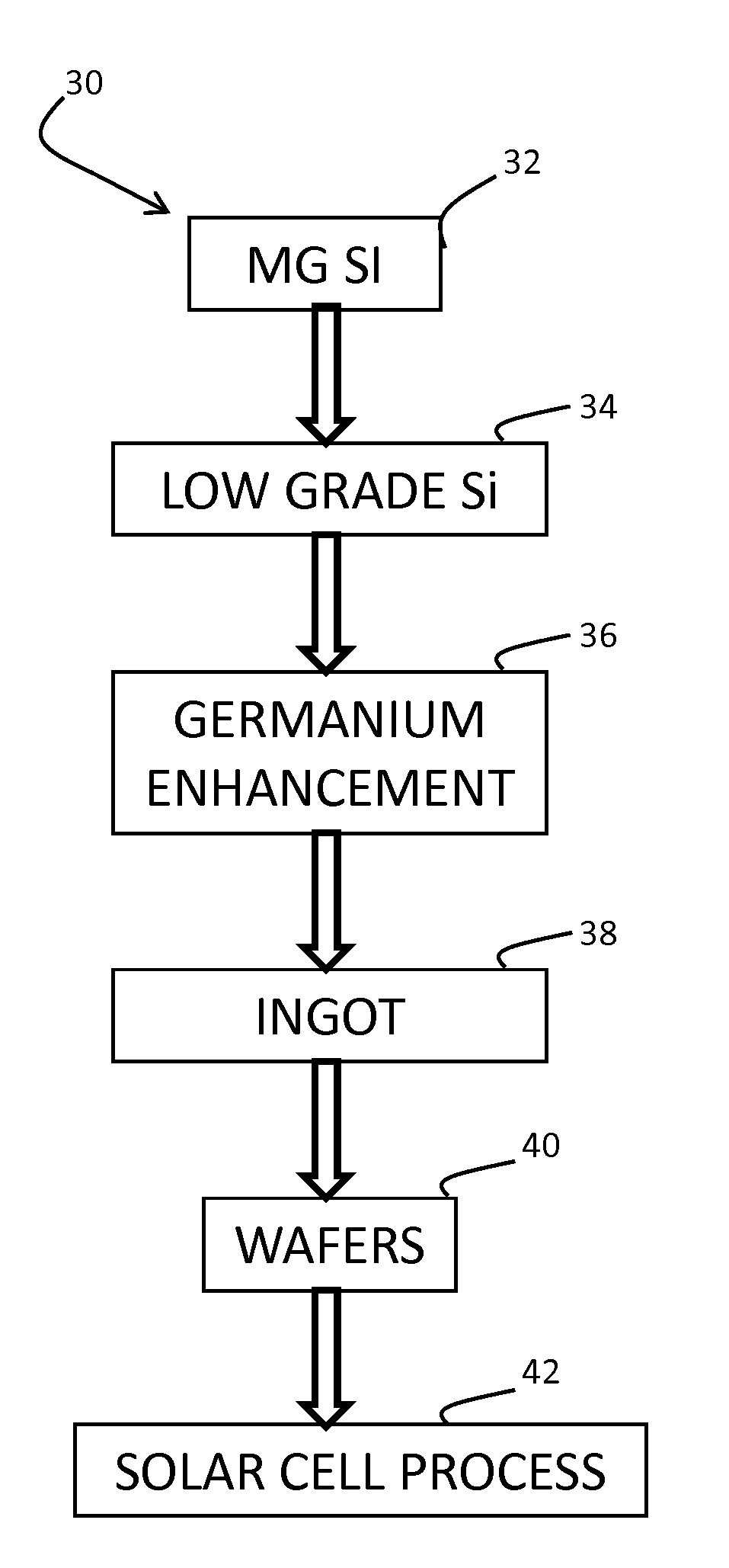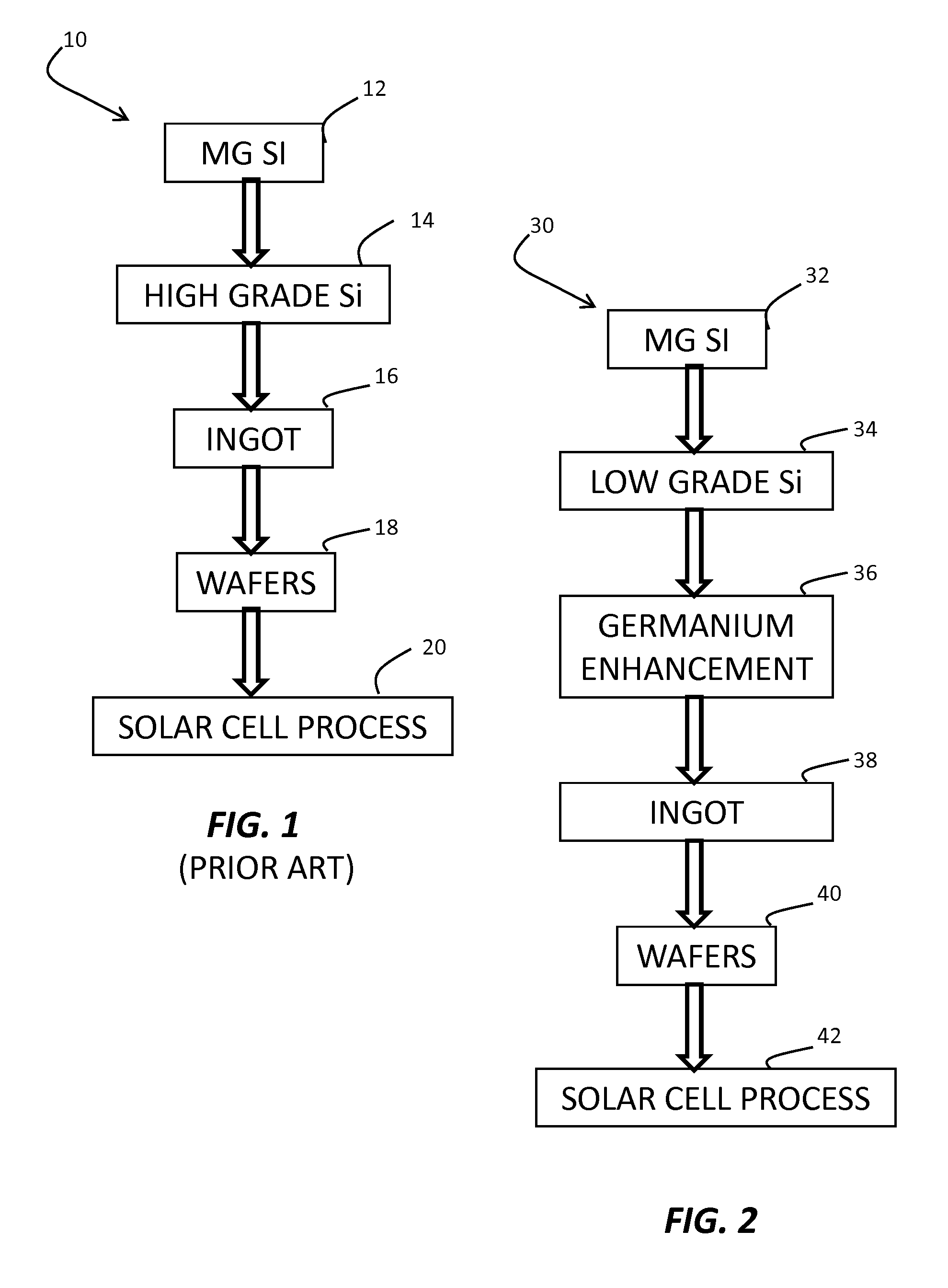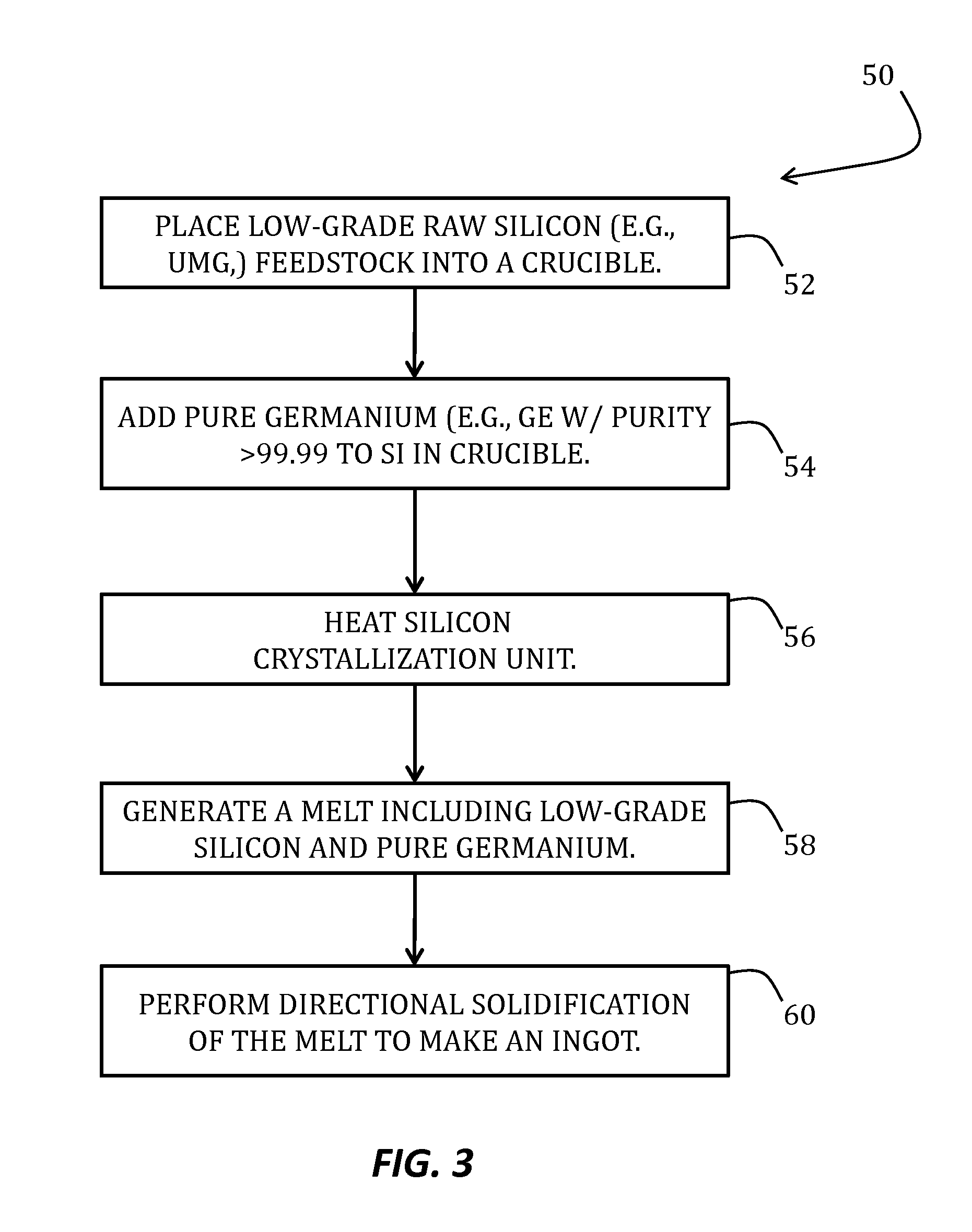Germanium-enriched silicon material for making solar cells
a silicon material and solar cell technology, applied in the direction of polycrystalline material growth, crystal growth process, crystal growth process, etc., can solve the problems of solar cell processing and handling, wafer breakage at wafer, degradation of cell properties, etc., to improve the control of intrinsic material strength, increase material strength, and increase compressive lattice strain
- Summary
- Abstract
- Description
- Claims
- Application Information
AI Technical Summary
Benefits of technology
Problems solved by technology
Method used
Image
Examples
Embodiment Construction
[0024]The method and system of the present disclosure provide a semiconductor ingot formation process for producing a silicon ingot or crystal using a low purity or high purity silicon feedstock. As a result of using the presently disclosed subject matter, an improvement in the properties of ingots formed from low-grade semiconductor materials, such as upgraded metallurgical grade silicon (UMG) occurs. Such improvement allows use of UMG silicon, for example, in producing solar cells for applications in solar power generation. The method and system of the present disclosure, moreover, particularly benefits the formation of silicon-based solar cells using UMG or other non-electronic grade feedstock materials. The present disclosure may, therefore, allow the manufacture of solar cells in greater quantities and in a greater number of fabrication facilities than has heretofore been possible.
[0025]Laying a context for the present disclosure, FIG. 1 depicts a known process 10 beginning at ...
PUM
| Property | Measurement | Unit |
|---|---|---|
| mechanical | aaaaa | aaaaa |
| electrical characteristics | aaaaa | aaaaa |
| purity | aaaaa | aaaaa |
Abstract
Description
Claims
Application Information
 Login to View More
Login to View More - R&D
- Intellectual Property
- Life Sciences
- Materials
- Tech Scout
- Unparalleled Data Quality
- Higher Quality Content
- 60% Fewer Hallucinations
Browse by: Latest US Patents, China's latest patents, Technical Efficacy Thesaurus, Application Domain, Technology Topic, Popular Technical Reports.
© 2025 PatSnap. All rights reserved.Legal|Privacy policy|Modern Slavery Act Transparency Statement|Sitemap|About US| Contact US: help@patsnap.com



